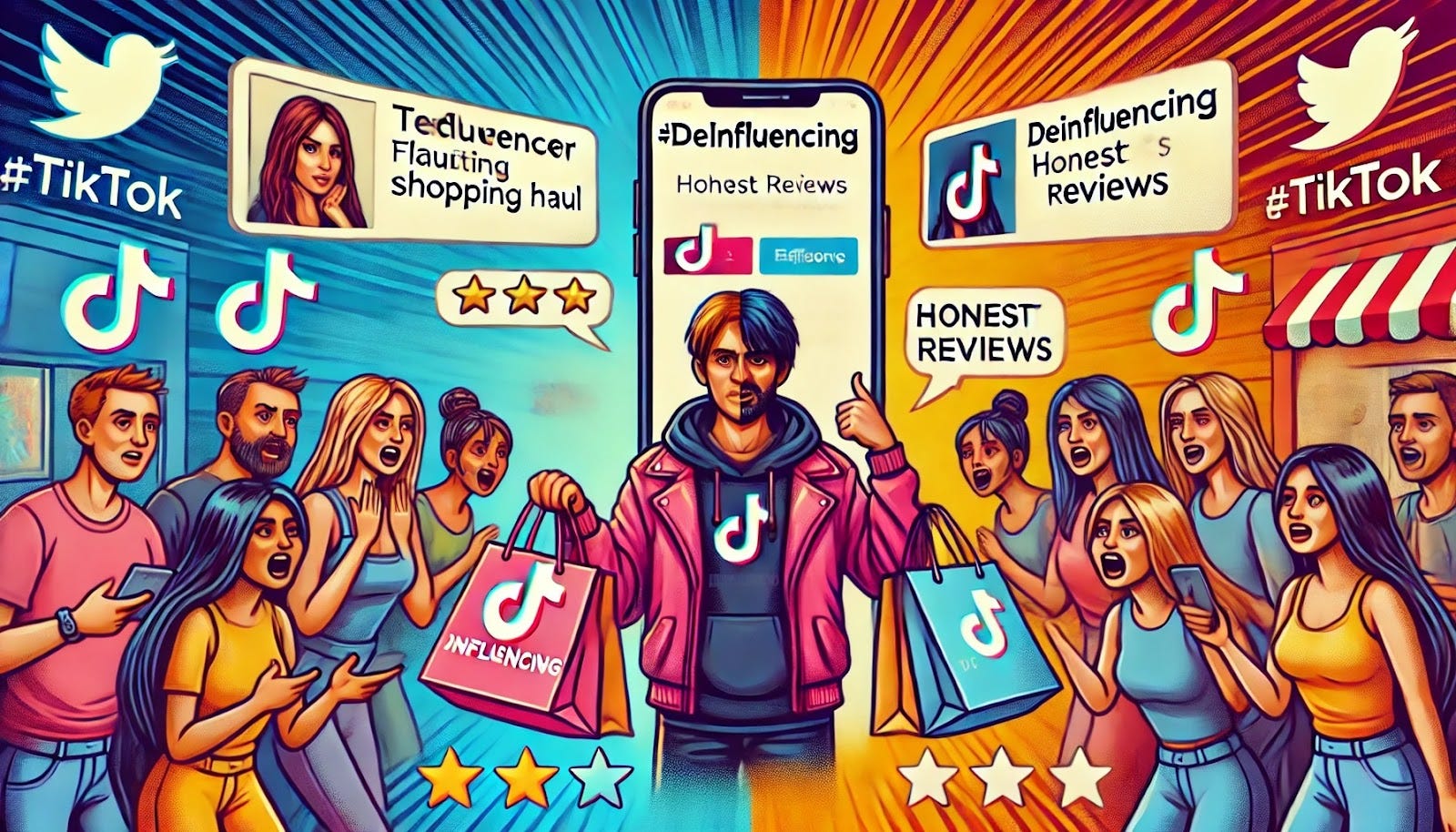Authenticity Over Hype
Plus, 🔓 Unlocking Ad Potential in Gaming
Hey Readers 🥰
Welcome to today's edition, bringing the latest growth stories fresh to your inbox.
If your pal sent this to you, then subscribe to be the savviest marketer in the room😉
The Power Of Deinfluencing
Insights from DTC
Deinfluencing is sweeping across social media, urging e-commerce brands to rethink their influencer marketing strategies and embrace the conscious consumption movement.
What’s Deinfluencing?
In response to influencers boasting massive shopping hauls and endless product endorsements, consumers are growing skeptical of their claims. Enter #deinfluencing, a hashtag where users share candid reviews of trending products to help others avoid impulse purchases. This hashtag has amassed over a billion views on TikTok.

Why The Shift?
Savvy social media users can now quickly spot when influencers promote products for quick cash rather than genuine passion.
The Rise of Authentic Voices
Deinfluencers are gaining massive followings by offering honest product critiques. Their transparency builds trust, making their recommendations more impactful. Take Jennifer Wang, for instance, who has garnered over 387K followers on TikTok by scrutinizing clothing brands and encouraging her audience to 'buy less but buy well'. Her detailed reviews on product construction and materials have led to influential partnerships with brands like Uniqlo.
Takeaways
1. Embrace Radical Transparency
Today’s budget-conscious consumers crave authenticity. They prefer transparent content over blatant self-promotion.
2. Innovate Influencer Campaigns
Brands should pivot from aggressive sales tactics to more genuine engagements. Encourage influencers to soft-sell rather than push-tracked discount codes.
3. Feedback is Gold
Monitor consumer feedback on de-influencing content to understand common complaints. Use these insights to refine product packaging, formulation, or positioning.
4. Leverage Authentic Influencers
Partnering with de influencers can rebuild brand credibility. Consumers trust these influencers more due to their honest, unfiltered opinions.
Key Insights
With growing concerns over overconsumption and transparency, the de-influencing trend is a breath of fresh air. Brands must adapt to stay relevant, embracing authenticity and honest engagements in their marketing strategies.
Video Game Ads: A Level-Up in 2024
Insights from Stacked Marketer
Video game ad revenue is rising, signaling a major shift in advertising strategies. With a diverse and engaged audience, video games offer a rich platform for brands. Here’s a look at how video game ads are evolving in 2024.
Game On: What Are Video Game Ads?
Video game ads come in various forms.
- Blended Realities are ads seamlessly integrated into the gaming world, creating an immersive experience for players.
- Reward Baits offers in-game rewards for viewing ads, providing an incentive for players to engage.
- Full-screen takeovers are interstitial ads that appear during game pauses or loading screens, capturing players' full attention.
Revenue Power-Up
The ad revenue from video games is soaring. Globally, a 5.7x increase from 2017 to 2027 is projected, adding $100B to the industry. In the US, this growing sector is showing steady growth despite making up less than 5% of total internet ad revenue. This indicates a significant opportunity for brands to tap into a lucrative market.
Shopping in the Digital Arena
Gamers are increasingly open to in-game purchases, driven by several factors. Microtransaction Mania has become a staple feature in many games, allowing players to buy virtual goods. The Spending Surge among Millennials and Zoomers, who are reaching peak spending power, is also contributing to this trend. Additionally, the Mobile Game Boom, which is popular among older generations, is expanding the market for in-game purchases.
Who’s Got the Controller?
Understanding gamer demographics is key to effectively targeting this audience. According to GWI’s report, 55% of mobile-only gamers are female, highlighting the importance of appealing to a diverse audience. Millennials dominate all gamer types, from casual gamers to e-sport players and influencers. Most gaming occurs on smartphones, emphasizing the need for mobile-friendly ad strategies.
Mobile Gaming: The Treasure Trove
Mobile gaming captures significant ad spend, with PC gaming as the runner-up. Despite this, mobile gaming ad potential remains underutilized as screen time far exceeds ad spend.
Key Insights
Video game ad revenue is climbing, with mobile gaming offering vast untapped potential. As ad implementation becomes simpler, expect video games to capture a larger share of the advertising market. Brands should keep an eye on this exciting frontier and consider integrating video game ads into their marketing strategies to stay ahead of the curve.
We'd love to hear your feedback on today's issue! Simply reply to this email and share your thoughts on how we can improve our content and format.
Have a great day, and we'll be back again with more such content 😍